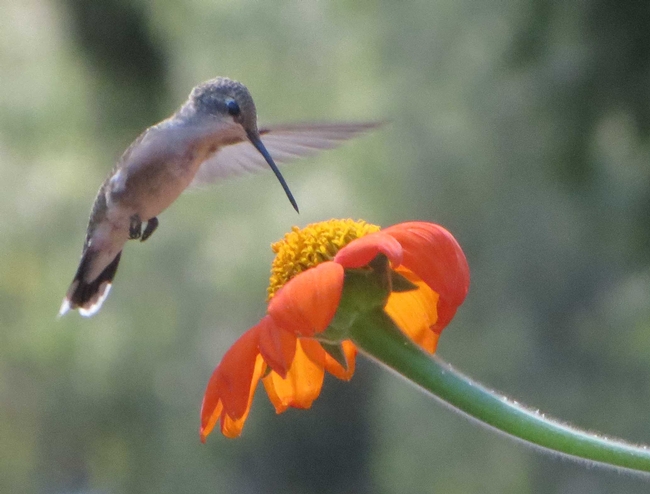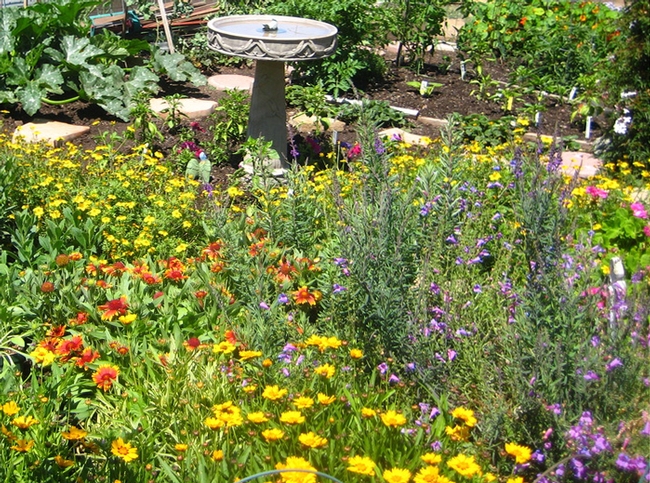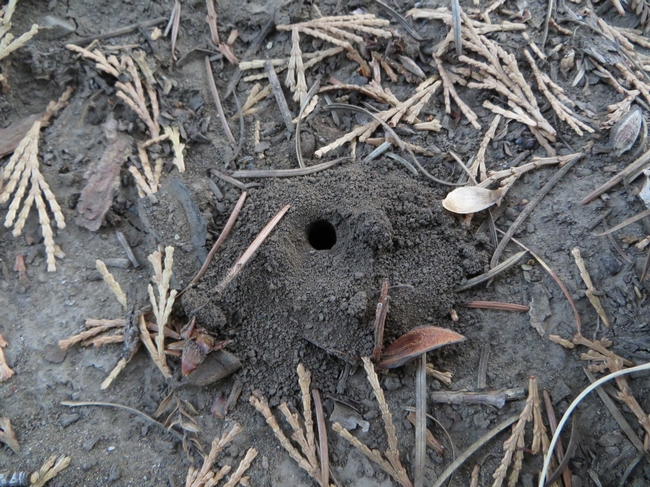By Michael-Anne Foley, Butte County Master Gardener, December 25, 2015.
Winter is the time many gardeners reflect upon what worked in the garden over the past year, plan changes to implement in the coming months, and consider new plants to introduce. This January, why not begin planning a more wildlife-friendly garden? You can encourage birds, butterflies, lizards, frogs and a host of other beneficial native animals and insects to visit or reside in your garden by adding desirable habitat and plants to your home landscape.
By choosing to develop and maintain a garden that follows a few basic wildlife-friendly steps you can help contribute to a better local environment while reducing your water usage and maintenance costs, conserving local flora and fauna, and making our urban and rural areas more ecologically sustainable.
Why Attract Wildlife to the Garden?

It is enjoyable and satisfying to witness the activities of natural visitors in our gardens. Beneficial insects and animals also help to naturally control garden pests.
Creating a Wildlife-Friendly Garden
Provide food, shelter, and water, and avoid the use of toxic chemicals. Food required by beneficial wildlife includes pollen, nectar, and pest bugs. Shelter can be as simple as native bunch grasses that lady beetles use for winter shelter, while the bare ground next to the grasses can provide nesting sites for predatory ground-nesting wasps. A simple wide-rimmed shallow dish with a layer of sand on the bottom creates safe water access for many insects.

Hummingbird feeders filled with a solution of one part sugar to four parts water (brought to a boil and cooled) will give hummingbirds the energy to catch and eat the flying insects that constitute their main source of protein.
Selecting Wildlife-Friendly Plants
Our own native plants require less water, have fewer pests and attract beneficial insects that prey on the undesirable insects that feed on vegetables and fruiting plants.
- As a general rule, flowering plants that have a landing zone (the petals) for insects to settle on allows them to move by foot to the pollen and nectar. Cosmos, sunflowers, daisies, zinnias, salvias and echinacea are good examples.
- Planting in groups increases pollinator efficiency. If a pollinator can visit the same type of flower over and over, it doesn't have to relearn how to enter the flower and can transfer pollen to the same species, instead of squandering the pollen on unreceptive flowers.
- Plant with bloom season in mind, providing food from early spring to late fall. The goal is to provide pollen and nectar throughout the entire year.
- Herbs used in the kitchen support many species of pollinators. Chives, mint, marjoram, parsley, lavender, rosemary, dill, basil and fennel are all attractive to insects.

Providing Shelter
- While bird, bat, and owl boxes are familiar to most gardeners, shelters can also be constructed for native bees. There are many species of native bees that live all around us, but their nesting and rearing requirements can generally be broken into two categories: 1) those that nest above the ground in dead wood, hollow twigs, or crevices; and 2) those that nest in tunnels deep in the soil. About 30% of native bee species nest in wood or twigs and 70% nest in the soil. Soil nesters are more difficult to shelter: sometimes the best we can do is notice their small entrances and try to avoid compacting the soil above their tunnels.
Today, native insects face many challenges for survival through loss of habitat; use of pesticides and herbicides; diseases; predators; and disappearance of native flower populations. As gardeners in the Central Valley of California we can shape our environment in an ecologically sustainable way that celebrates our native wildlife.